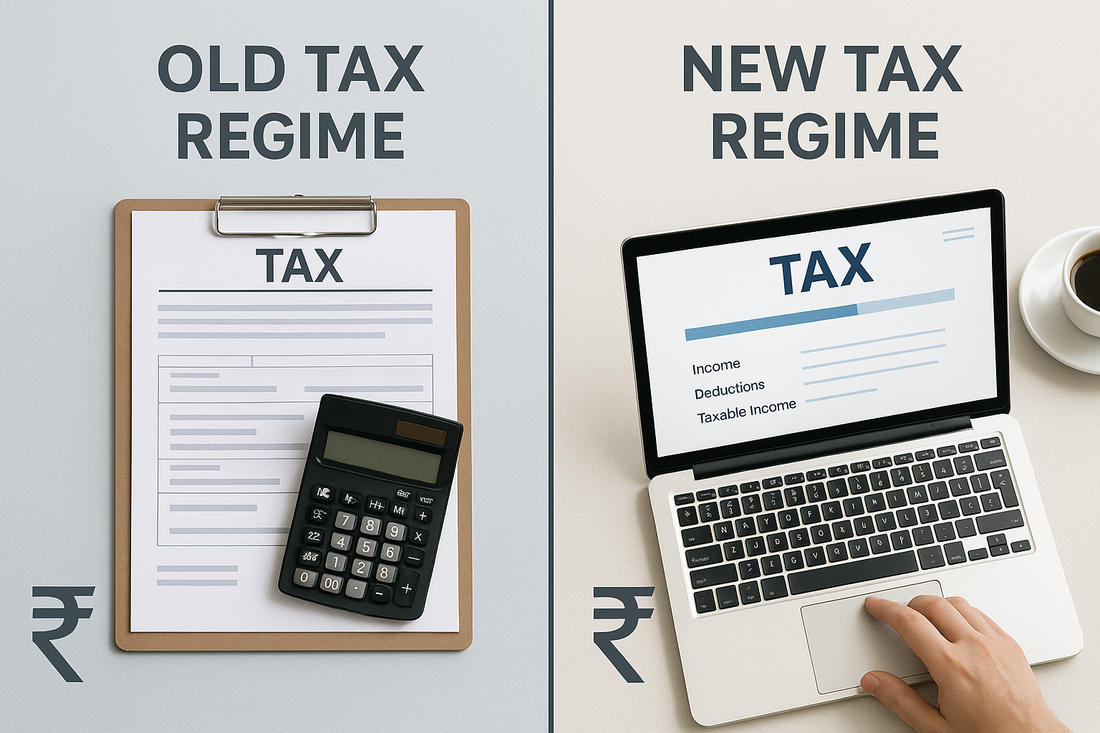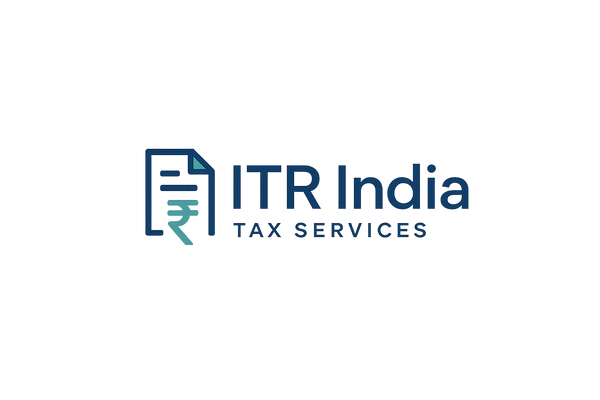
Old Tax Regime vs New Tax Regime in India
Share
New Tax Regime vs. Old Tax Regime: Which Saves You More Tax? (For FY 2024-25)
Tax season is here, and one big question on everyone's mind is: Should I choose the New Tax Regime or stick with the Old Tax Regime? With the new regime now being the default option, understanding the difference is more important than ever!
Here is a good news! You can still change the tax regime for April 2024 - Mar 2025 period which is also known as FY 2024-25.
Don't worry, it's not as complicated as it sounds. In very simple words, go for new regime if you do not have more than 4 Lakhs worth of deductions and your salary is over 15 Lakhs. Keep reading if you want more precise details.
Let's break down what each regime means for your wallet in simple terms.
(This information is for the Financial Year 2024-25, which corresponds to the Assessment Year 2025-26)
What is the Old Tax Regime?
Think of the Old Tax Regime like a traditional savings plan. It has higher tax slab rates, BUT it allows you to reduce your taxable income by claiming various deductions and exemptions for specific investments and expenses you've made.
Key Idea: Higher rates, but lots of ways to save tax if you invest or spend on specific things.
Common Deductions/Exemptions You Can Claim (Examples):
- Section 80C: Investments up to ₹1.5 lakh in PPF, ELSS mutual funds, Life Insurance premiums, EPF, Home Loan Principal, etc.
- House Rent Allowance (HRA): If you live in a rented house and receive HRA from your employer.
- Home Loan Interest: Deduction on interest paid for your home loan (Section 24b).
- Section 80D: Health insurance premiums for yourself and your family.
- Standard Deduction: ₹50,000 flat deduction for salaried individuals and pensioners.
- Leave Travel Allowance (LTA): For travel expenses during leave.
- ...and several others.
Pros of the Old Regime:
- ✅ Can significantly lower your tax liability if you make full use of deductions like 80C, HRA, home loan interest, etc.
Cons of the Old Regime:
- ❌ Higher tax rates if you don't have enough deductions to claim.
- ❌ Requires you to keep track of investments and collect proofs for claiming deductions.
- ❌ Tax calculation can be more complex.
What is the New Tax Regime? (The Default Option Now!)
Think of the New Tax Regime like a simplified, straightforward plan. It offers lower tax slab rates compared to the old regime, but it takes away most of the popular deductions and exemptions.
Key Idea: Lower rates, but fewer opportunities to reduce tax through investments/expenses.
Important Note: For FY 2024-25 onwards, the New Tax Regime is the default option. If you don't actively choose the Old Regime when filing your return, you'll automatically be taxed under the New Regime.
What Deductions Can You Still Claim?
Very few! The major ones are:
- Standard Deduction: ₹50,000 flat deduction for salaried individuals and pensioners (this was added recently, making the new regime more attractive for many!).
- Employer's Contribution to NPS: Deduction under Section 80CCD(2).
- ... a few other specific ones, but most common deductions are gone.
What Deductions are NOT Allowed (Examples)?
- ❌ Section 80C (PPF, ELSS, LIC, etc.)
- ❌ HRA Exemption
- ❌ Home Loan Interest (Section 24b - mostly)
- ❌ Section 80D (Health Insurance Premium - mostly)
- ❌ LTA Exemption
- ❌ Most other deductions under Chapter VI-A (like 80G, 80TTA etc.)
Pros of the New Regime:
- ✅ Lower tax rates across most income slabs.
- ✅ Simpler tax calculation and filing process.
- ✅ Less need to track specific investments just for tax saving.
- ✅ Basic exemption limit is higher (₹3 Lakhs vs ₹2.5 Lakhs in Old Regime).
Cons of the New Regime:
- ❌ You lose out on major tax-saving benefits from investments like 80C, HRA, home loans, etc.
- ❌ Might result in higher tax payable if you previously claimed significant deductions.
So, Which Regime is Better for YOU?
There's no single answer – it depends entirely on your income, your investments, and your expenses.
The Old Regime might be better if:
- You have heavily invested in tax-saving instruments (like PPF, ELSS, LIC, covering the full ₹1.5 lakh under 80C).
- You pay a significant amount of house rent and claim a large HRA exemption.
- You have a home loan with a substantial interest component.
- You claim several other deductions (like education loan interest, donations, etc.).
The New Regime might be better if:
- You don't make many tax-saving investments or have expenses eligible for deductions under the old regime.
- You prefer lower tax rates and a simpler filing process.
- Your income structure is such that the lower slab rates benefit you more than the deductions would.
- You are just starting your career and haven't built up significant investments yet.
The sure shot way to know is to calculate your tax liability under BOTH regimes. Compare the final tax payable amount and choose the one that results in lower tax for you.
Remember: Salaried individuals can generally choose between the regimes each year. However, individuals with business income have restrictions on switching back to the old regime once they opt for the new one.
Don't leave money on the table! Make the smart choice this tax season.
Disclaimer: This information is for general guidance only. Tax laws are subject to change. Please consult with a qualified tax professional at ITR India for personalized advice based on your individual financial situation.
